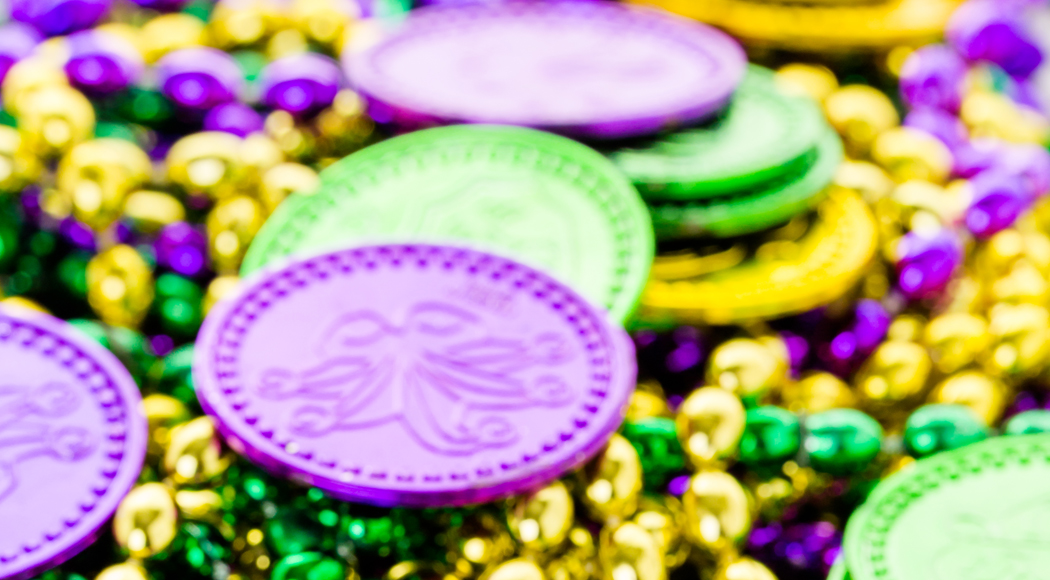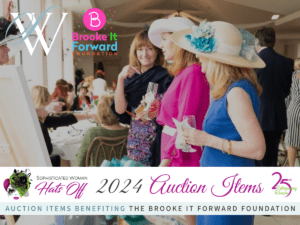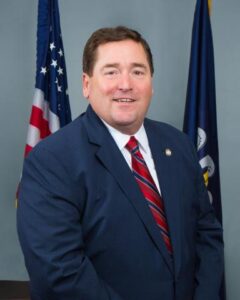I am a Mardi Gras veteran. A childlike Christmas morning feeling of anticipation resonates in me the night before Fat Tuesday. It’s congenital, born with the first butt tap when I was introduced to this world at Baptist Hospital on Napoleon Avenue, just a few days into the Lenten season.
That seed for carnival excitement germinated in my youth. My father, a “cop shop” reporter, spent his nights in an office inside police headquarters that was on the corner of Tulane and Broad. My elementary school didn’t let out until 3 p.m., so it was rare for me to see him during the week. And on most weekends, a Depression Era-work ethic kept him busy. He would photograph weddings, edit the quarterly magazine he published, or write/edit copy for a weekly newspaper he owned with a friend who was a printer. With so little free time and sensing my need for his company, he would occasionally take me to work with him.
Dad’s beat often featured a noir cast of nicknamed gangsters, their molls and conmen—players straight from a Hammett or a Chandler script. Typically though, he reported on street crime or the victims of unbridled passion. To shield an inquisitive mind from events I was too young to comprehend, my father would occasionally pawn me off to a fellow reporter whose job it was to cover daily feature events: a Globetrotters basketball game at Municipal Auditorium, an afternoon Tulane baseball game or a Mardi Gras parade.
Flambeaux-lit night parades viewed from rickety bleachers at Lee Circle were my favorite. The parade procession would wobble down St. Charles Avenue. Modest-sized floats lurched when tractors jumpstarted. Stubborn, mule-drawn carriages with iron wheels scraped the asphalt. And it was a bit frightening—the arcane mythological references, the intimidating mysterious, masked krewe captains on horseback wearing silk and plumage, and the disturbing, unnerving plastic face masks of float riders. But their throws of doubloons with heft, the bracelets and necklaces of multi-colored glass were treasures. Fine, cobalt blue beads strung with hints of opposing color were my favorites. And the corndogs and confections from vendors made it worthwhile. To this day I keep a few as reminders of what used to be.
Later in life, it became my job as a news photographer to cover Mardi Gras. Carnival season was so important to the social and civic dynamic of New Orleans that no staff member was allowed to schedule vacation during that time. If you called in sick, you might just as well have called in dead. One long Mardi Gras weekend, I set a personal best photographing 16 parades in five parishes. Carnival season was a grind.
The toll of documenting so many parades did not diminish the excitement of Fat Tuesday. I would rise early, put my cameras on the passenger seat and cruise the city streets for visual treats. A shark boarding a streetcar; a German shepherd holding a leash with a heeling human in tow; a Spanish moss family waiting for a bus on the neutral ground…and the party was just beginning.
Great planning is involved in participating in the daylong event that is Fat Tuesday. Locals know that the most important factors are parade location, bathroom access and food. In the spirit of a new year of resolutions, which hopefully would translate into lifestyle choices, I’d like for you to consider foregoing the usual Mardi Gras parade fare. Forget the pasta jambalaya and nix the praline King Cake and the creole bread pudding. With all the new containers for transporting hot or cold food, why not consider a hot and healthy soup? All the better to keep warm when bead begging. Have a safe and happy Mardi Gras. Enjoy my recipe for Butternut Squash Soup.






